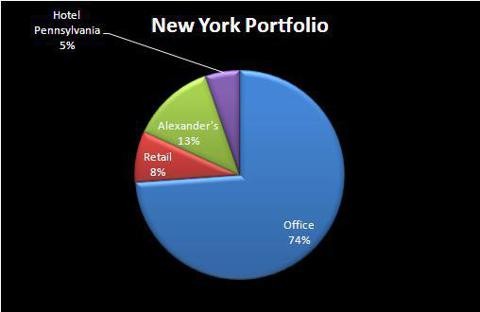Hedge Funds Go the REIT Way
Post on: 3 Апрель, 2015 No Comment

Those hedge funds are clever. First they dreamed up a secondary market that would buy up bundles of the single family rentals they are busy buying up. All was going well until the ratings agencies weighed in (see Strike Three: Moody’s Weighs In on Rating SFR Securities and The Rush to Securitize Single Family Rentals: The Fitch Report Changes the Rules ). Now they have another way to cash in big time on the REO-to-Rental business.
Concerns Over The REO to Rental Plan
Over the past year, all three of the leading securities ratings agencies, S&P, Fitch and Moody’s, raised concerns about the difficult determining and measuring the quality of property management in securitized rentals. Fitch in particular raised questions about the lack of data more than a few years old on rentals. “While we have had conversations with some of the market-level data providers, one of which we found to have a robust data warehouse, the history only dates back to 2008-2009. For these reasons, Fitch is unlikely to assign a high investment-grade rating to such transactions,” the firm said in late October .
The ratings agencies destroyed any expectation that an REO-to-rental security will get rated in 2013. In light of the fact that the REO-to-rental business is only four or five years old, clearly it will take several additional years to develop the multi-year track record that Fitch will require for a high rating. High ratings are critical for REO-to-rental securities because they will be a new investment product against a wide variety of established investment vehicles for the attention institutional investors.
When it became clear that a secondary market is years away, at least one leading hedge fund, Och-Ziff Capital Management. an early entrant into the REO-to-Rental boom, decided in October to pull out. The fund, with largely California properties, found it wasn’t doing as well as projected on rental income and could get a good price for its single family rentals in light of rising values.
Most are still going strong despite the problems with ratings agencies. By mid-October, private equity giant Blackstone Group had spent over $1 billion gobbling up foreclosed home in Florida, California and Arizona. Through the fall, new funds seemed to crop up every day. The initial estimate of several dozen hedge funds spending $6 to $8 billion on single family rentals by investment bankers at Keefe Bruyette & Woods may be very conservative.
To see through funds that are tearing through their cash and expected to be selling single family rental backed securities next year, at least seven investment-bank lenders are getting set to roll out the first round of balance-sheet term financing to a handful of private equity and real estate firms looking to buy foreclosed US single-family homes and convert them to rentals.
The banks, including Deutsche Bank, Barclays, Citigroup and Wells Fargo, will hold the loans on-balance sheet and by year-end are likely to refinance them with unrated securitizations backed by the rental cash flows. Once completed, the unrated transactions will be presented to the ratings agencies early next year as concrete proposals. Agency analysts hope to vet them to determine proper credit enhancement for eventual rated asset-backed securities (ABS) transactions, but there is no chance the ratings agencies will be ready next year.
An industry expert I trust told me that he believes about half the funds in the market today will pull out should no secondary market materialize. The rest intend to make it in the REO-to-Rental business, but some deeply committed to markets California and the Southwest that one dominated foreclosure are having second thoughts as prices rise and inventories shrink. Slim pickings are driving up their costs but rents aren’t keeping up, and a number of funds are thinking about flipping their acquisitions to generate cash instead of continuing to rent.
REITs Enter the Single Family Real Estate Market
Some funds, however, have another idea, which isn’t a new one at all. They are setting up real estate investment trusts, or REITs, which are either private or public funds that manage portfolios of commercial real estate—shopping centers, apartment buildings, office buildings, etc. These REITs, however, are solely dedicated to single family rentals, a new asset class that has never before been tried in the REIT model. Rather than raising funds by marketing securities on a secondary market, these single family rental REITs are going public via an IPO on a stock market.
REIT supporters like Todd Eagle, a managing director at Goldman Sachs, argue REITs are the most efficient model for taking single-family rental investments public because of their tax benefits and because the single-family properties are similar to multifamily rentals, which already have a considerable track record as REITs.
REITs, whose primary income streams are from real estate, don’t pay federal income taxes. In exchange, they’re required by the Internal Revenue Service to distribute at least 90 percent of their taxable earnings to shareholders in the form of dividends.
To qualify as a REIT, a company must invest at least 75 percent of its assets in real estate and obtain 75 percent of its gross income from rents or interest on mortgages from financing property, according to the National Association of Real Estate Investment Trusts.
Silver Bay Realty is the first REIT dedicated totally to the single family rental market to go public. Silver Bay Realty Trust of Minnetonka, Minn. Last week, on December 14, it announced it had raised $245 million by offering 13.25 million shares at $18.50 and plans to list on the New York Stock Exchange.
Silver Bay is the brainchild of Two Harbors Investment, a publicly traded mortgage real estate investment trust that invests in securities backed by home mortgages. In January, Two Harbors branched out into buying actual homes and placed them in a unit called Silver Bay. It offered few details at the time, leaving analysts guessing about where it was headed. As of December 4, Two Harbors had acquired 2,200 houses, according to the New York Times. Two Harbors paid or the rents it was charging. Two Harbors shares, which recently traded at $11.66, are up about 25 percent in 2012.
Two Harbors spun off Silver Bay into a separately traded public REIT. The new company will focus on homes in Arizona, California, Florida, Georgia, North Carolina and Nevada, states where prices fell hard when the bottom dropped out. The company says its investment plan will help clear foreclosed homes from the market, spruce up neighborhoods and renovate vacant homes, presumably while enriching its new shareholders.
Colony Capital, the private equity firm picked by the Federal Housing and Finance Agency to manage rentals for Fannie Mae and Freddie Mac, also plans to go public with a REIT (See When the Greatest Investor in the World Meets the FHFA .) Colony hopes to price an initial public stock offering of 25 million 12.5 million shares at $20 each when its IPO launches after the first of the year. It will trade on the New York Stock Exchange under the symbol CLNY.

Other single family rental REITS are on the way from AG Mortgage Investment Trust, American Realty Capital Trust, American Residential Properties Inc. and no doubt more that haven’t yet been announced.
REITs, however, may be only a bridge strategy for hedge funds committed to the REO-to-Rental business. In the long run, the stock markets also may not be the best place for an asset class that seems so ideal for institutional investors seeking a better return on a relatively safe investment. The rash of IPOs in the offing will force REITs to wait in line, or they might dilute interest in this new asset class and fail to realize their price range.
“This will be a workable business as a REIT for at least three to five years,” Jay Leupp, a managing director at Lazard Asset Management told the New York Times. “If the economy perks up and renters start buying, he said, “it may make more sense to liquidate the portfolio and transition into another business or simply return the cash to shareholders.”
Despite Silver Bay’s success, the timing may not be right for REO-to-Rental IPOs. “U.S. REITs look less attractive to us now than they have over the last 10 years, Richard Levine, portfolio manager on the $2.7 billion Neuberger Berman Equity Income Fund, told the Wall Street Journal last week. The REITs are closing out a strong year, they have grown very popular and managers like Levine worried that opportunities are fewer. Demand is pushing up prices so much that some investors worry that the yield advantages arent worth the risks that come with the higher prices.
On the other hand, they might be just the ticket to breathe new life into REITs with an asset class delivering a far higher rate of return than other REIT categories.
Free eBook from BiggerPockets!
Get The Ultimate Beginnner’s Guide to Real Estate Investing for FREE — read by more than 100,000 people — AND get exclusive real estate investing tips, tricks, and techniques delievered straight to your inbox twice weekly!
- Actionable Advice for Getting Started,
- Discover the 10 Most Lucrative Real Estate Niches,
- Learn how to get started with or without money,
- Explore Real-Life Strategies for Building Wealth,
- And a LOT more
Sign up below to download the eBook for FREE today!














